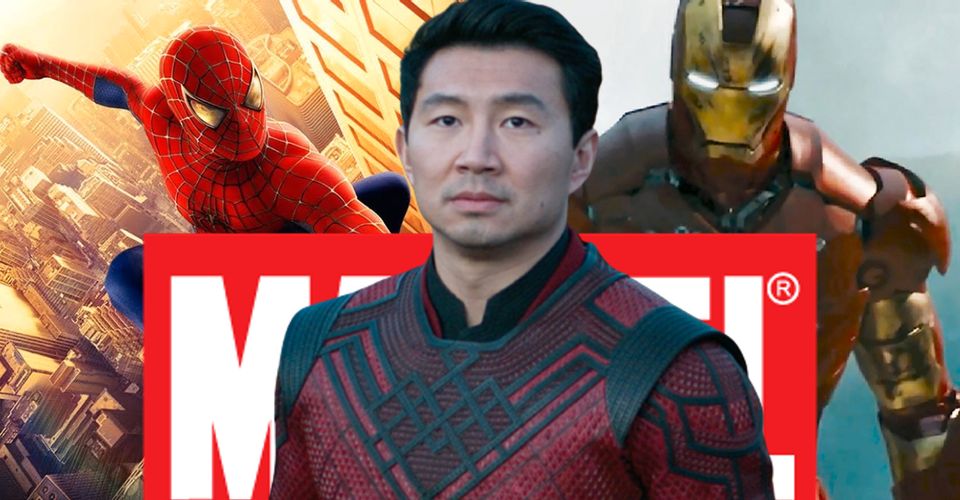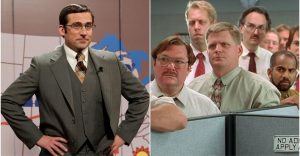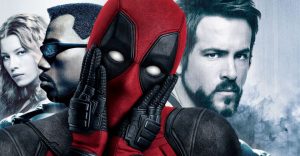Why It Took Marvel 20 Years To Make Shang-Chi

After 20 years, Marvel is finally bringing Shang-Chi to the big screen in Shang-Chi and the Legend of the Ten Rings – but why did it take so long? Marvel’s first martial arts movie, Shang-Chi & the Legend of the Ten Rings is also a welcome step forward for diversity in the Marvel Cinematic Universe. It stars Simu Liu as Shang-Chi, Marvel’s own Master of the Martial Arts, a character who was created back in the 1970s and who has been significantly redesigned to fit with the MCU.
This may be Shang-Chi’s debut, but naturally everyone is curious about just how the character will fit into the overarching narrative of the MCU. That’s particularly the case for Liu himself, who would love Shang-Chi to appear in an Avengers movie. “In terms of what’s next, I know what’s on my mind is the same as what’s on everybody else’s mind,” he observed in one interview, “and hopefully, there’s an Avengers in the future, somewhere. Obviously, I don’t know anything about that, but being such a big fan of the whole franchise, I know that that’s the gold star.“
Still, as exciting as the future may be for the MCU’s newest superhero, that does raise the question of just why it has taken Marvel so long to make a Shang-Chi film in the first place. Surprisingly, it’s not hard to imagine a scenario where Shang-Chi appeared in the MCU a long time ago, way back in Phase 1 – but things just didn’t work out.
Shang-Chi Was Originally In Marvel’s Phase One Plans

It may be hard for modern viewers to believe, but there was a time when a Marvel superhero movie was seen as something of a major gamble; in fact, Stan Lee had spent years of his life attempting to persuade Hollywood to buy into Marvel superheroes, including Shang-Chi. Finally, though, the late ’90s and early 2000’s saw Marvel succeed on the big screen at last, with Blade, the X-Men, and Spider-Man proving to be major hits. Those early Marvel movies were produced by more experienced studios, with Marvel selling the film rights, and by 2001 Stephen Norrington signed up to direct a film called The Hands of Shang-Chi with Dreamworks. It didn’t happen, and the rights eventually reverted to Marvel – who decided to make the most of them.
In 2004, Marvel decided they had cultivated enough experience to make films themselves, and they took out a $525 million loan in order to self-finance their first movies. They literally bet everything on this, securing the loan against the film rights to the ten franchises they hoped to develop for the big screen. In 2005, Marvel announced the initial 10-property MCU lineup: Ant-Man, The Avengers, Black Panther, Captain America, Cloak & Dagger, Doctor Strange, Hawkeye, Nick Fury, Power Pack and Shang-Chi. It’s fascinating to look back on this initial MCU, contrasting it with the franchise as it took shape; only two of these projects became part of Phase 1, and not until 2011 (for Captain America: The First Avenger) and 2012 (for The Avengers). Shang-Chi & the Legend of the Ten Rings, first mentioned as part of the MCU in 2005, wouldn’t happen until 2021.
Marvel did almost introduce Shang-Chi in 2012’s The Avengers, in a post-credits scene. At that time, the studio hoped to break into the Chinese market, and they approached the Chinese-based DMG Entertainment Motion Picture Group with the idea of co-producing some films. They intended to begin the partnership by debuting a Chinese character – either Shang-Chi or the Mandarin – in a post-credits scene. “Simply putting Chinese people in a film was mistakenly thought of as the guaranteed price for admission to China’s lucrative market,” then-DMG president Chris Fenton observed as he recalled business practices at the time. “So, studios did it.” DMG passed on the opportunity, and Shang-Chi was forgotten for another nine years.
Why Shang-Chi Was Delayed

It’s not really a surprise that the initial Hands of Shang-Chi project failed; back then, Marvel was attempting to turn all characters it owned into a film franchise, and the vast majority of their deals went south. What is more remarkable, though, is that the Master of Martial Arts still didn’t turn up on the big screen when Marvel began self-financing, and the MCU became such a stratospheric success. The reason is simply that Marvel regained some key character rights in 2006, most notably those for Iron Man, and plans changed. Marvel commissioned a number of focus groups in order to decide who to prioritize – focus groups composed entirely of children, because the studio wanted to see which superhero would have the most interest for kids and potential merchandising opportunities. The children chose Iron Man to begin the MCU, in what proved to be a wise decision.
Iron Man committed the MCU to a different direction, with a post-credits scene setting the Avengers Initiative up as the culmination of Phase 1. Marvel focused on properties associated with the Avengers – notably Captain America and Thor – and other projects were moved to the backburner. Shang-Chi wasn’t the only character affected by this, with the Runaways – once described by Marvel’s Kevin Feige as “one of the best new concepts that we’ve had in quite some time” – dropped altogether. As noted, Marvel do seem to have toyed with the idea of prioritizing Shang-Chi after The Avengers in order to enter the Chinese market, but those plans failed and he was forgotten again for a while. Office politics at Marvel became rather strained from 2012 through to 2015, with diversity a key bone of contention between Feige and Marvel’s reclusive CEO Ike Perlmutter, so Shang-Chi probably wasn’t a priority. A corporate restructure at Marvel in 2015 dealt with that problem, but the Phase 4 slate was already generally locked in by that point. It’s notable that Shang-Chi & the Legend of the Ten Rings is coming out now at the very beginning of Phase 4, suggesting it is viewed as a priority by Feige, now president of Marvel Studios.
How Shang-Chi’s Introduction Would Have Changed The MCU

It’s certainly interesting to imagine how an earlier Shang-Chi movie would have reshaped the MCU. It would probably only have been possible in a slate less focused on the Avengers, with more of those first-proposed MCU heroes appearing in the shared universe as well, but there would still have been an ensemble movie – and it’s reasonable to assume it would probably have set up Thanos as well, who became the endgame of Phases 1-3 after Joss Whedon asked to put the Mad Titan in The Avengers‘ post-credits. That certainly means there’s a hypothetical timeline where Shang-Chi was a member of the Avengers in the MCU all along, and even tried to punch out Thanos.
But that doesn’t necessarily mean an earlier Shang-Chi would have been a success. The modern Marvel Studios is much more sure-footed, much more committed to diversity, and Feige has cultivated an atmosphere of creative freedom with his writers and directors that did not exist before. Just as a Black Widow movie in 2013 would probably have been poorly handled and over-sexualized, so it’s likely an earlier Shang-Chi film would have been culturally flat-footed and even downright problematic. The franchise would likely have stumbled out the gate, with Marvel attempting to course-correct as they went along, just as they did with the Thor movies. The modern Marvel Studios is simply a better place to produce Shang-Chi & the Legend of the Ten Rings, and it’s a good job the film was held back until now.
- Shang-Chi and the Legend of the Ten Rings (2021)Release date: Sep 03, 2021
- Eternals (2021)Release date: Nov 05, 2021
- Doctor Strange in the Multiverse of Madness (2022)Release date: May 06, 2022
- Thor: Love and Thunder (2022)Release date: Jul 08, 2022
- Black Panther: Wakanda Forever/Black Panther 2 (2022)Release date: Nov 11, 2022
- The Marvels/Captain Marvel 2 (2023)Release date: Feb 17, 2023
- Ant-Man and the Wasp: Quantumania (2023)Release date: Jul 28, 2023
- Guardians of the Galaxy Vol. 3 (2023)Release date: May 05, 2023
About The Author


















